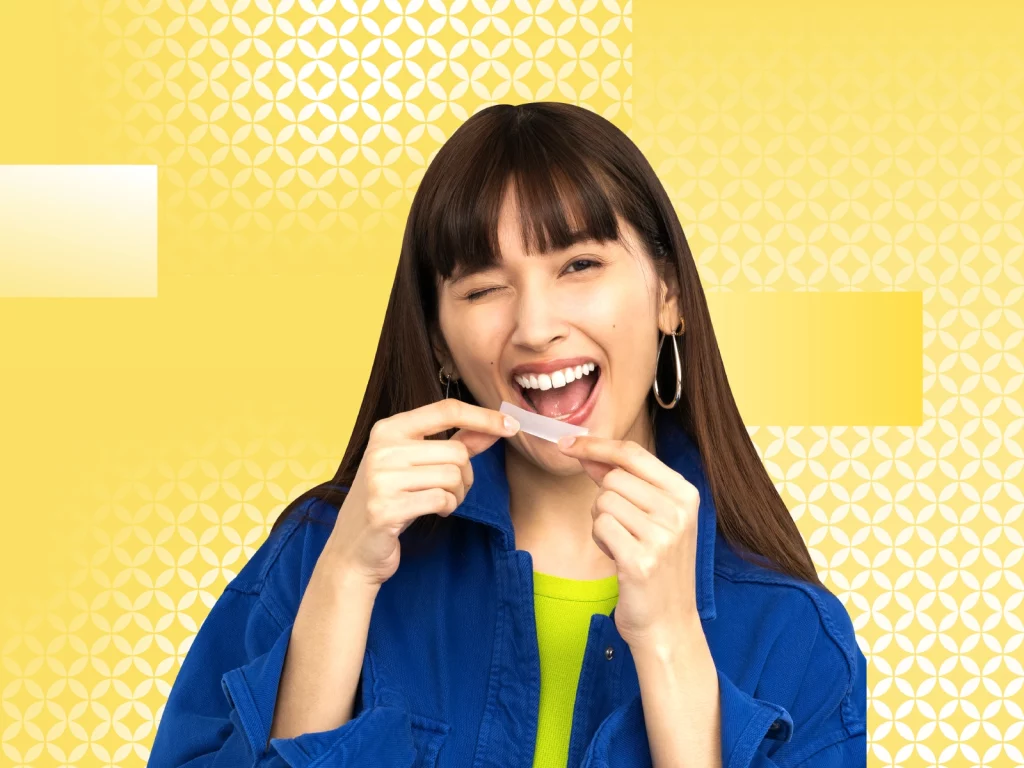We’re obsessed with having clean and bright teeth so here’s a comprehensive guide to teeth whitening treatments.

Pricing of teeth whitening treatments
What you need to know before getting teeth whitening treatments?
While teeth whitening is considered safe, it may result in some side effects such as teeth sensitivity. Hydrogen peroxide is a common active ingredient used in teeth whitening treatments, which can cause teeth to become temporarily porous and thus more sensitive.
Teeth whitening results are also a reflection of concentration and time. If a stain has been there a long time, the whitening agent has to diffuse deeper into the tissue of the teeth.
Regardless of the teeth whitening treatment you opt for, the bottom line is to educate yourself adequately about its side effects and precautions.
Types of teeth whitening treatments
1. In-clinic/dentist whitening kit

Without a doubt, this option is the most effective and has results that last for up to 2 years. It’s professionally performed by a dentist, and promises you a dazzling smile within 45 minutes to two hours. This whitening procedure can whiten your teeth up to eight shades in one sitting since it contains the highest percentage of peroxides. The downside of such a strong procedure is that teeth sensitivity will be present for a few weeks.
2. At-home teeth bleaching

At-home bleaching is cost-effective and causes less sensitivity to teeth. The procedure works with bleaching gels that come in a syringe, and the user has to put them in a tray either provided by the manufacturer or dentist.
3. At-home LED whitening

If you’re on social media, chances are you’ve encountered those cool-looking LED contraptions that promise you a dazzling, bright smile.
We hate to break it to you but, LED teeth whitening isn’t much more than a marketing gimmick. This is because these direct-to-consumer DIY whitening gel kits cannot legally exceed 0.1% hydrogen peroxide – barely enough to deliver that dazzling smile.
But don’t take our word for it, hear it from a professional:
Dr. Bruce Lee, the clinical director at T32 Dental Centre told CNA that LED light plays no role in teeth whitening.
“As for the ‘cold’ [LED] light, which manufacturers claim will speed up the whitening process, research has proven that the whitening process is affected by the whitening gel. Whether or not there is light or the source of light makes no significant difference.”
4. Whitening strips

Whitening strips may be one of the safest procedures for sensitive teeth and gums. They contain a thin layer of the whitening agent using a lower concentration of active ingredients like hydrogen peroxide or carbamide peroxide. While generally safe, using whitening strips for extended periods of time could potentially cause tooth sensitivity and gum irritation.
5. Whitening pen

One of the basic teeth whitening techniques used by many is whitening pens. Its plus point is definitely the convenience – it can be used on the go since it is easy to use. A whitening pen works by layering bleaching gel to your teeth, the gel becomes solid and creates a film over each tooth. The film gives the effect of your teeth appearing whiter but would dissolve and wash away over time.
6. Whitening toothpaste

Whitening toothpaste uses abrasive ingredients like silica that help physically remove stains on the surface of your teeth. However, the natural colour of your teeth remains unchanged. A few whitening toothpastes contain minimal amounts of hydrogen peroxide or other chemicals that help dissolve stains.
7. DIY whitening

Whitening toothpaste uses abrasive ingredients like silica that help physically remove stains on the surface of your teeth. However, the natural colour of your teeth remains unchanged. A few whitening toothpastes contain minimal amounts of hydrogen peroxide or other chemicals that help dissolve stains.
FAQs
How long does teeth whitening last?
The effects of teeth whitening length vary from person to person depending on the food and drinks consumed. It can last up to 2-3 years or as little as 6 months. It also depends on the type of whitening treatment you opt for.
Is whitening safe for sensitive teeth?
It is always better to consult your dentist if you have sensitive teeth before beginning any whitening treatment. However, the type of whitening treatment chosen also affects how sensitive your teeth get after treatment.
Can teeth whitening damage gums?
Teeth whitening can pose certain risks such as:
- Damage to the teeth
- Increased sensitivity to hot and cold
- Tooth decay
- Gum irritation
Hence, it is important to always check with your dentist for safety and possible side effects of any at-home or in-clinic whitening treatments.
Can I eat after teeth whitening?
It is generally recommended to avoid coffee, wine, or food that stains teeth after whitening to maximise the effectiveness. The following are recommended to not be consumed within 48 hours after the whitening procedure:
- Coffee and Tea
- Wine
- Fizzy drinks
- Curry
- Sweets
- Tobacco
- Dark sauces
Does charcoal-activated whitening work?
In Singapore, charcoal-activated whitening products are popular which can be found in almost every drugstore across the country. However, it does not actively whiten your teeth but can effectively remove stains and discoloration from the surface of your teeth.




